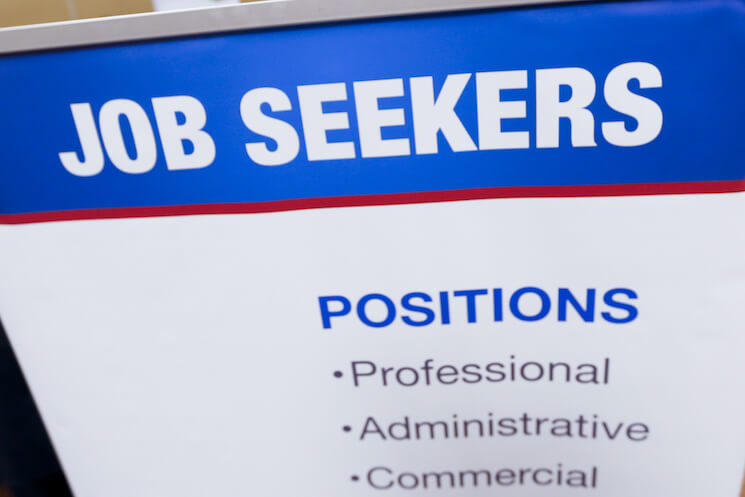JOLTS and another look at the health of the U.S. labor market

Yesterday, the U.S. Department of Labor released data for February from its Job Openings and Labor Turnover Survey, or JOLTS—the lesser-known monthly report on the U.S. labor market. The dataset shows us some of the labor market dynamics that underlie numbers like net job creation. The survey tells us, for example, how readily workers are quitting or getting hired for jobs. It also tells us how many job openings employers are posting—a sign of labor demand as firms get ready to hire.
Over the course of the labor market recovery from the Great Recession, there’s been concern about the number of job openings. There seems to be a breakdown in the Beveridge Curve, the relationship between openings and the unemployment rate shown below. A shift outward in the curve indicates that firms are posting jobs at a rate they would have done at a lower unemployment rate before. Some economists interpret this shift as a sign that employers can’t find qualified workers.

There’s reason to be skeptical, however, that this seeming shift is a sign of a skills breakdown. Let’s consider the relationship between some other JOLTS data and the unemployment rate.
First, let’s look at the quits rate, or the amount of workers voluntarily leaving a job. As Evan Soltas pointed out a couple of years ago, the relationship between the quits rate and the unemployment rate in the United States seems unchanged. Workers still seem to take a lower unemployment rate as a sign that they can get another job.

And data on hiring in the United States seems to back up their confidence. The hiring rate, or the percent of workers hired to new jobs, also seems to be following its previous relationship with the unemployment rate. So businesses are hiring workers at a rate in line with what we’ve seen at similar levels of the unemployment rate.

Firms seem to be hiring just as they were before, but they are posting jobs at a much higher rate. What could account for this disconnect between openings and hiring? It may be that shifts in worker bargaining power and increased profits are making employers more willing to post more jobs as they are less costly. Or it could be that employers are sending the wrong demand signals to workers or looking for future employees in the wrong ways. That’s a possibility that Byron Auguste, Managing Director of Opportunity@Work, floated in this interview with Equitable Growth’s Heather Boushey.
But let’s be clear about what a consistent relationship would mean for the labor market. This doesn’t mean that because unemployment has hit a healthy level, the labor market is strong. The points for recent months when it comes to quits and hires may be on the old curve, but they still could move up and to the left. U.S. wage growth is still subpar and underemployment is still quite high, meaning unemployment could go lower. That means we should also be looking for the quits rate and the hiring rate to go higher as well.
